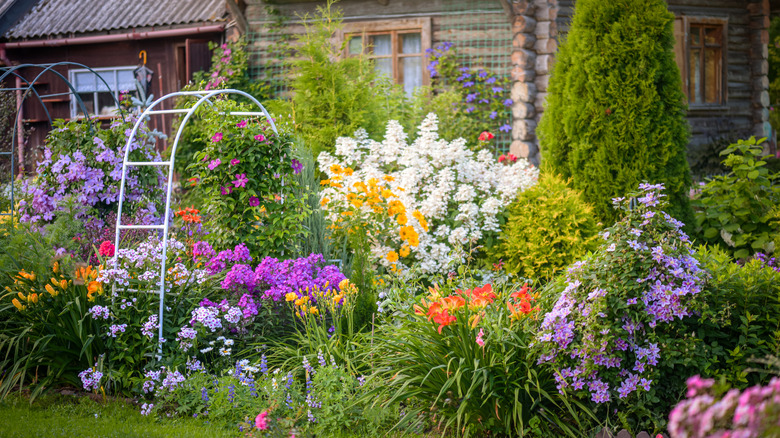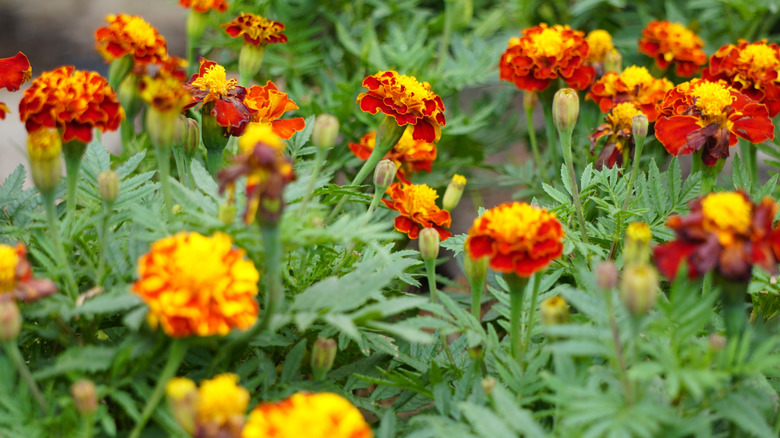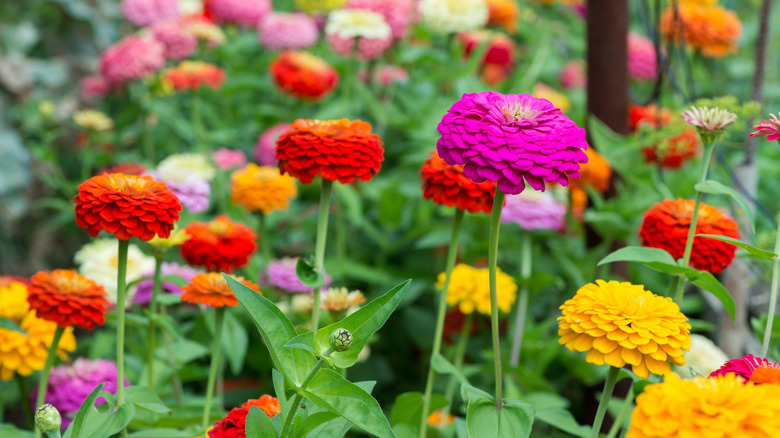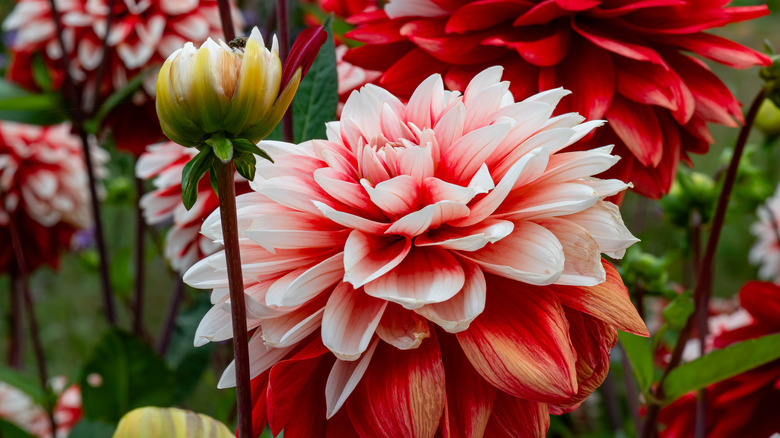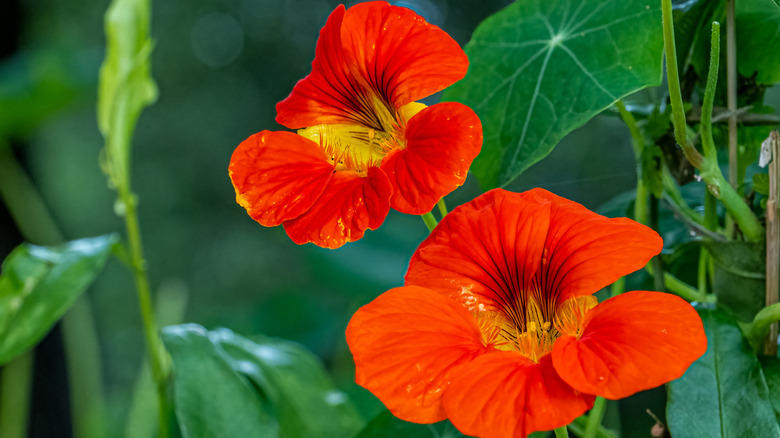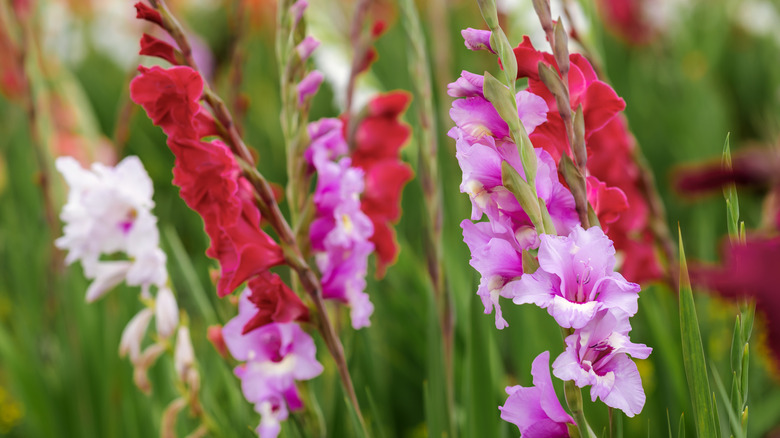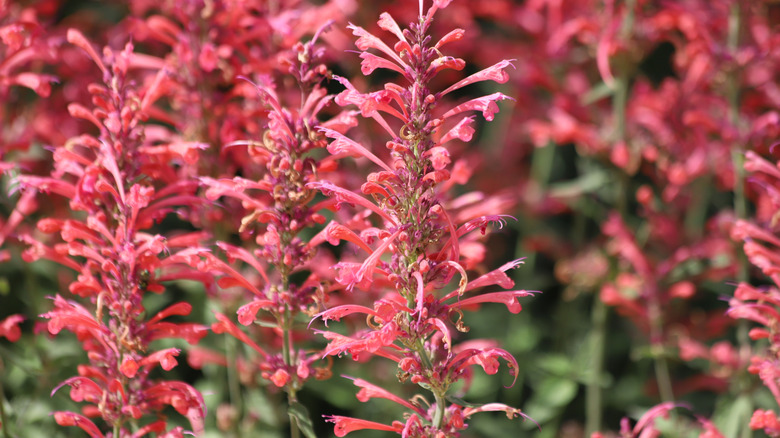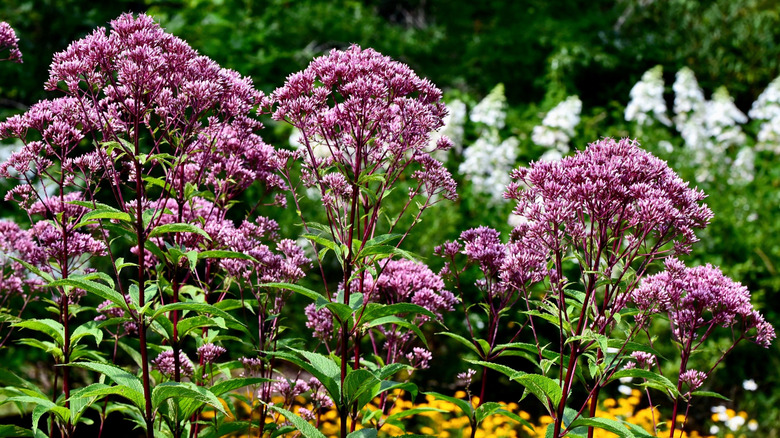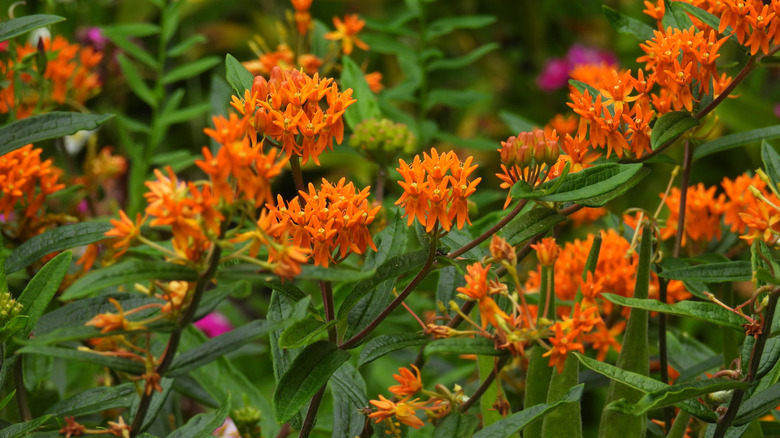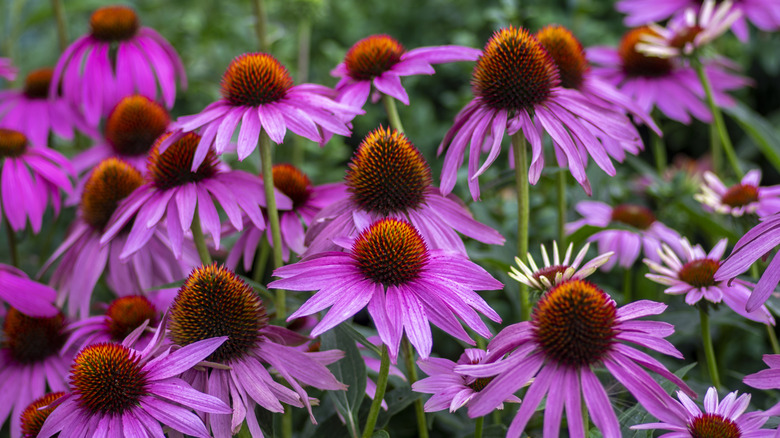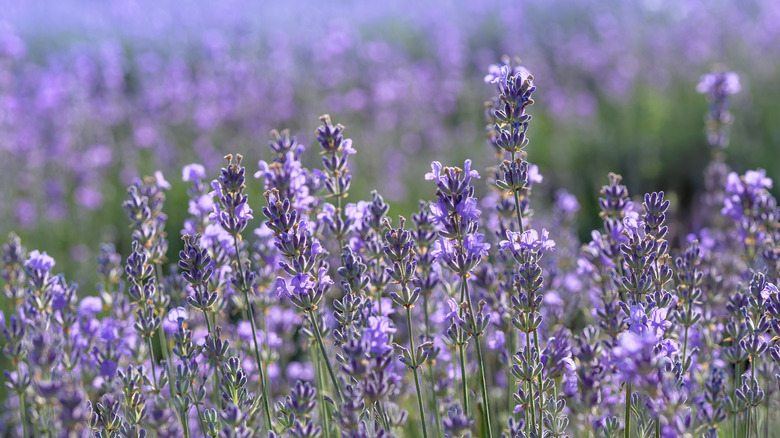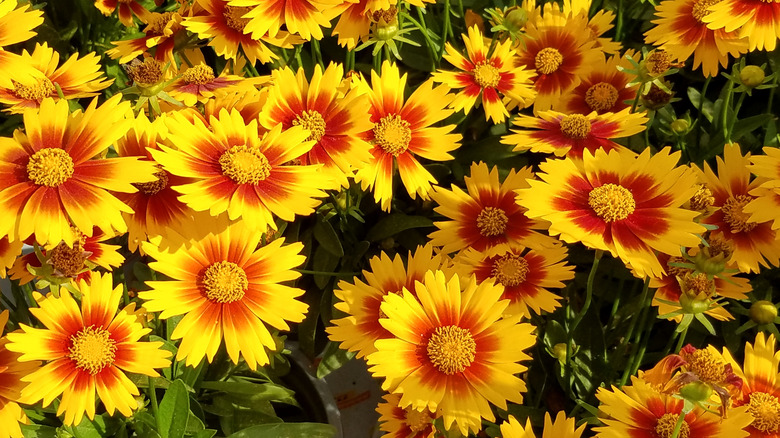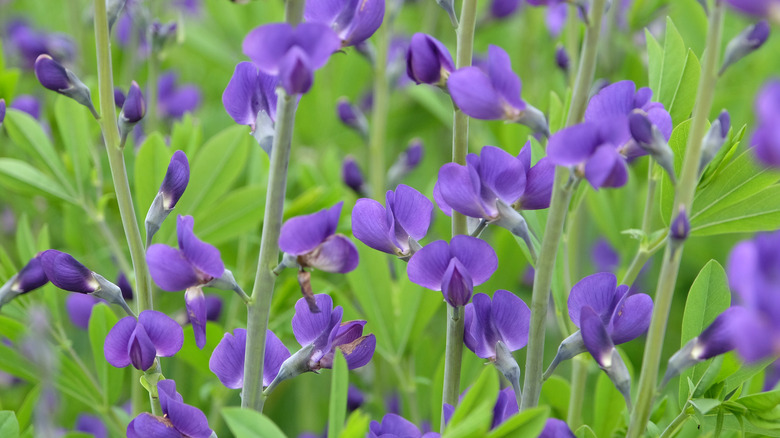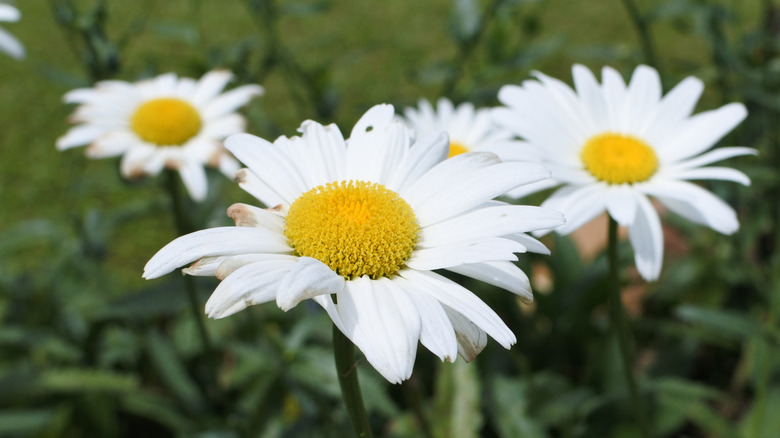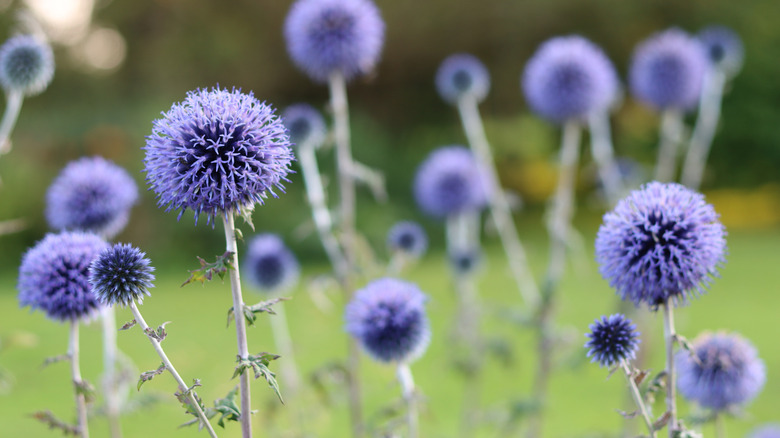14 Flowers You Should Plant In June For Dazzling Summer Blooms
Once Memorial Day has passed and the heady June days are upon us, you might think the flower planting window is closed. But that's far from true. If you want to ensure a long season of lovely blooms, pick up some packs of seeds or bulbs, and get planting. This list features 14 flowers in a variety of colors, heights, and shapes. They're sure to brighten your garden beds until the chilly months set in. Among these plants are annuals and perennials, flowers that grow well from seed and flowers that need to be transplanted, as well as others that need a bit more attention once the cold arrives.
Perfect for a colorful garden and tantalizing to pollinators, this array of plants will grow into a dazzling display for you to enjoy for months. Most of these blossoms are extremely easy to care for, leaving you extra time on the porch to put your feet up with a frosty glass of lemonade. Eager planters, rest assured that none of these plants are listed as invasive in the United States. However, there are a few plants that individual gardeners have mentioned overtake their landscapes, and some of these species are concerns in other countries; we mention those plants with caution and/or offer options that should prevent unwanted growth.
Marigolds
With puffs of petals and sturdy foliage, marigolds (Tagetes spp.) are a tough pollinator-pleaser that also protects plants from pests. Edge your beds with these annuals to prevent hungry rabbits from nibbling at flowers. Plant some around your tomato plants to keep away whiteflies. Marigolds grow in a wide range of hardiness zones, from 2 to 11. Mexican marigolds (Tagetes erecta) hold up beautifully in dry heat, whereas French marigolds (Tagetes patula) will thrive in rainier regions. Drought-tolerant and foot-high signet marigolds (Tagetes tenuifolia) are a good choice if your arid garden can't accommodate 3 to 4-foot Mexican marigolds.
Zinnias
True stunners in a rainbow of colors, zinnias (Zinnia elegans) are a reliable garden standard that will offer you blooms until first frost. Pollinators, particularly butterflies, are fans of these robust flowers. Zinnias come in a mind-boggling array of hues, heights, and shapes. If you have a flower bed in zones 3 to 10 with well-draining soil that gets 6 to 8 hours of sun per day, zinnias will be happy there. Treat them to a generous helping of compost, and your zinnia seeds will take off like rockets.
Dahlias
Dahlias (Dahlia x hortensis), like zinnias, are tough, bright, and highly diverse. You can find dahlias in nearly any color imaginable, and their tubers can go into the ground as late as early June. A spot with full sun, shelter from wind, and well-draining soil is the best place to plant dahlias for stunning blooms. They are cold-hardy in zones 7 to 10. If you live in a cooler region, take care to plant dahlias only after your soil has reached 60 degrees Fahrenheit or warmer.
Nasturtium
With appealingly round flowers and leaves and a surprisingly peppery taste, nasturtium is a pretty and practical flower to get going in June. They grow best from seed and come in trailing (Tropaeolum majus) and bush (Tropaeolum minus) varieties. Tucking a few of them in around vegetables can help keep aphids at bay. Nasturtium will show off its sunny and fiery-colored blossoms
in a sunny spot with well-draining, relatively poor soil in zones 2 to 11.
Gladiolus
Spikes of perennial gladiolus (Gladiolus spp.) add drama to any flower garden. They come in luscious colors like salmon, magenta, deep red, and lemon yellow. Plant corms in full sun after your last frost in well-draining soil amended with compost. They are cold-hardy in zones 7 to 10. Some can take 60-90 days to flower, so choose varieties that best fit your growing season. Some sources mention gladiolus as a sometimes overwhelmingly aggressive grower, but it isn't included among the list of official invasive species. However, there are individual cases of gardeners finding their beds overrun with gladiolus.
Anise hyssop
If you want to bring more pollinators into your yard and garden, get to know anise hyssop (Agastache foeniculum). This aromatic and attractive plant sports tall columns of tiny trumpet-shaped flowers. These perennials are natives of the northern Midwest and plains. Anise hyssop is well-suited to gardens in chillier zones, but it can live happily up to zone 8. Plant it in full sun to part shade in any type of well-draining soil, and you can enjoy its show well into fall.
Joe Pye weed
Don't dismiss this plant because of its uninspiring name. Joe Pye weed (Eutrochium purpureum) is an enthusiastic flowering perennial with dusty pink to lilac colored florets that appeal to butterflies but not deer. Joe Pye weed reaches heights between 3 to 7 feet and spreads up to 4 feet, so set aside a sizable section at the back of your garden for this native perennial. Joe Pye weed is cold-hardy in zones 4 to 9, tolerates wet and clay soils, and is content in full to part sun.
Butterfly weed
Monarch butterflies are the marathoners we cheer for as they migrate thousands of miles to their winter breeding ground. Give them a tasty fuel stop by planting butterfly weed (Asclepias tuberosa). This monarch-colored flower is part of the milkweed family but only grows 1 to 2 feet tall. Plant butterfly weed in a sunny spot with dry to moist, sandy soil in zones 3 to 9. It doesn't need much water, but it is very susceptible to aphids.
Coneflower
Perhaps best known for its purported immune-boosting properties, there are plenty of other reasons to plant coneflowers (Echinacea spp.), as well. This purple, occasionally yellow, flower has a brown cone-shaped center that lures in pollinators like hummingbirds, butterflies, and bees. Once the seeds form, songbirds come in to feast. Coneflowers are hardy from zones 3 to 9. Plant these prairie-native perennials like living in full sun and well-draining soil. Coneflowers can grow up to 4 feet tall, so plant with that in mind. Regular deadheading can extend their blooming season.
Lavender
Sleep aid, perfume note, drink flavoring, and pollinator pleaser, lavender (Lavandula) is an all-around treat for the senses for humans and other creatures alike. The most common variety is English lavender (Lavandula angustifolia), and although it's not native to North America, it's not invasive. If you live in zones 5 to 8, plant these fragrant and eye-pleasing flowers in a spot with well-drained soil and full sun. Expect it to grow up to 1½ to 2 feet tall.
Coreopsis
The yellow and deep orange coreopsis (Coreopsis spp.) is a ray of sunshine in a garden. It is one of the latest-blooming flowers you'll see. Bees and butterflies adore it, but deer stay away. Although it's invasive in Australia and Japan, it isn't a concern in North America. Low-maintenance coreopsis doesn't complain about heat, humidity, or drought. Plant it in full or partial sun in soil that drains well and isn't clay-rich. They're large — up to 8 feet tall and wide — so choose a spot with plenty of room. They are hardy in zones 4 to 9.
Wild indigo
Aptly-named wild indigo (Baptisia) shows off rich purplish-blue flowers that are evidence their membership in the pea family . Wild indigo can grow to heights and widths of 3 to 4 feet. If that's overwhelming, opt for a variety that tops out at 1 to 2 feet. Plants are hardy in zones 4 to 8. Its soil preferences are wide; they manage well in clay or lime soils as long as they're moist and well-draining. Plant wild indigo in sun. Its flowers are delightfully long-lasting, from 3 to 6 weeks.
Shasta daisy
Many gardeners eye daisies (Leucanthemum x superbum) with suspicion, but with one glance at these summer classics, it's hard not to feel affection. Shasta daisies aren't natives of North America, but despite their spreading tendencies, they aren't listed among invasive species. Named varieties, like 'Becky' and 'Lancaster Darling Daisy,' tend to show more restraint. Plant them in full sun in moist soil. They are cold-hardy in zones 4 to 8.
Globe thistle
The name "thistle" might give you pause since there are a handful of invasive ones. Globe thistle is a non-native species from Eurasia, but it's not listed among noxious invasives in North America. Still, approach this striking purple flower with caution, as it reseeds easily and tends to spread. Globe thistle (Echinops ritro) is a delight for bees and a beauty in the garden. They grow up to 4 feet tall and 3 feet wide, and thrive in most kinds of soil as long as they drain well. Plant it in full sun in zones 3 to 8.
